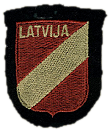11
The ghetto population was one of the indigenous resources that the Reich exploited through the instrumentality of the SS. 13/ Two simple measures permitted the SS to extract the maximum from the ghetto residents before they dropped from exhaustion and hunger or were taken to the nearby woods 1to be machine-gunned. First, the food supplied to the ghetto was kept below starvation levels. This served two purposes: (1) hungry people are more easily oppressed than those who are well fed, and (2) what would otherwise have been consumed was made available to the German war machine. 14/ The second means of control was the intimidation or removal from the ghetto of any person who showed the slightest inclination to resist German authority. 15/
The foregoing 2provides the setting for the testimony of the next two witnesses, Messrs. Loewenstein and Waggenheim. Loewenstein moved to the ghetto in August, 1941. Several times in October and November, 1941, he 3saw Hazners in charge of a detail of soldiers in Latvian uniform 16/ and at the ghetto gate. (tr. 3571) One such
| 13/ | The Nurnberg Trial, 6 F.R.D. at 121-123, 139. |
| 14/ | In The Nurnberg Trial, Rosenberg is quoted as saying: "We see absolutely no reason for any obligation on our part to feed also the Russian people with the products of that surplus territory " Id. at 122. |
| 15/ | Speaking of slave laborers, Himmler is quoted as saying: "They are none of them dangerous so long as we take severe measures at the merest trifles." Id. at 124. |
| 16/ | 4The uniform worn by the schutzmannschaft, according to paragraph 6 of the stipulation of May 17, 1979. |
Examination
Only Germans were entrusted with machine guns.
The INS's "setting" and subsequent allegation of Hāzners's guilt is notably absent of the German hand managing every detail, from planning through implementation. While the INS complained that Hāzners introduced information not related to his show cause deportation order, they were content to visit all the horrors of the Holocaust upon Hāzners, including quoting Rosenberg and Himmler above.
3“saw Hazners in charge of a detail of soldiers in Latvian uniform 16/ and at the ghetto gate.” . . . [footnote] 4“The uniform worn by the schutzmannschaft, according to paragraph 6 of the stipulation of May 17, 1979.”
| 1 | Testimony of Meier Loewenstein, 27-October-1977, cross examination, transcript pp. 356–366. |
